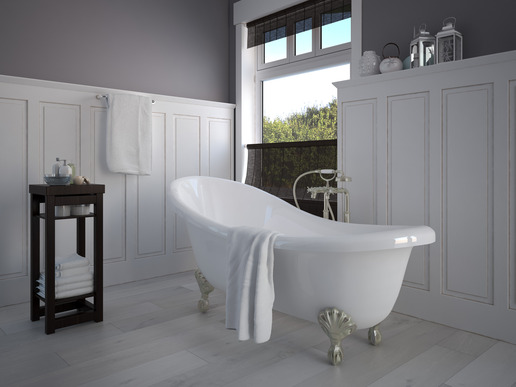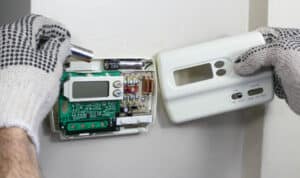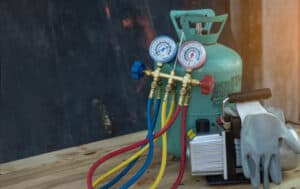
Get Answers To The Most Common Radiant Heating Questions
In order to reach a solid answer, here are a few facts about radiant heating, how it works and some of the advantages they provide home owners in Scottsdale – which should provide you with solid facts to make a good decision based on your particular requirements.
Question #1 – What is Radiant Floor Heating?
There are three basic types of radiant floor heating systems that are often used in Scottsdale homes that include:
- Air-Heated Radiant Floors: These types of systems are seldom used in residential applications due to the simple fact that air does not hold large amounts of heat. These systems are often used in conjunction with solar air heating systems. The obvious drawback here is that they only work during the day light hours – so it’s not very applicable for Arizona use.
- Electric Radiant Floors: These units are more common in Arizona as they are powered and installed through electricity. An electric radiant flooring system consists of plastic sheets that are mounted on the subfloor and under a floor covering (like tile for example).
- Hydronic Radiant Floors: A hydronic (or liquid-based) system is the most popular type of radiant flooring. This type of unit pumps heated water from a boiler through tubing laid in a pattern under the floor. The major hurdle for these systems is installation, as they are often laid inside a new home that is being built.
Question #2 – What Are Advantages of Installing Radiant Floor Heating Units?
There are several advantages to installing a radiant flooring system including these major items:
- Radiant flooring systems are more energy efficient than a baseboard heating and forced-air units because it eliminates common duct system losses in heat.
- People who have breathing conditions like allergies or COPD tend to like radiant floor heating because it does not circulate allergens and debris like a forced air system does.
- Hydronic (or liquid-based) systems use very little electricity and can use multiple energy sources including gas, solar water heaters or combination units.
Question #3 – Are Radiant Heating Systems ‘Worth the Additional Cost’?
The most commonly asked question about Radiant heating systems is the cost involved. There is no getting around this fact – radiant heating units can be rather pricey – and the cost to install them tends to be more than forced air installations. This is due to the additional equipment needed to install and the locations of installation (including flooring and inside walls). For many existing home owners, radiant heating installation in Scottsdale is simply not an option. However, for new home builders, installing radiant heating systems can be rather affordable – and over an extended period of time, can save you money each month on electricity use.
The key to determining whether or not radiant heating installation in Scottsdale is right for you is simply to determine your personal resources, heating system needs and budget. Also, don’t be afraid to contact a reliable heating installation expert to get their opinion.



